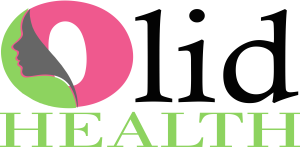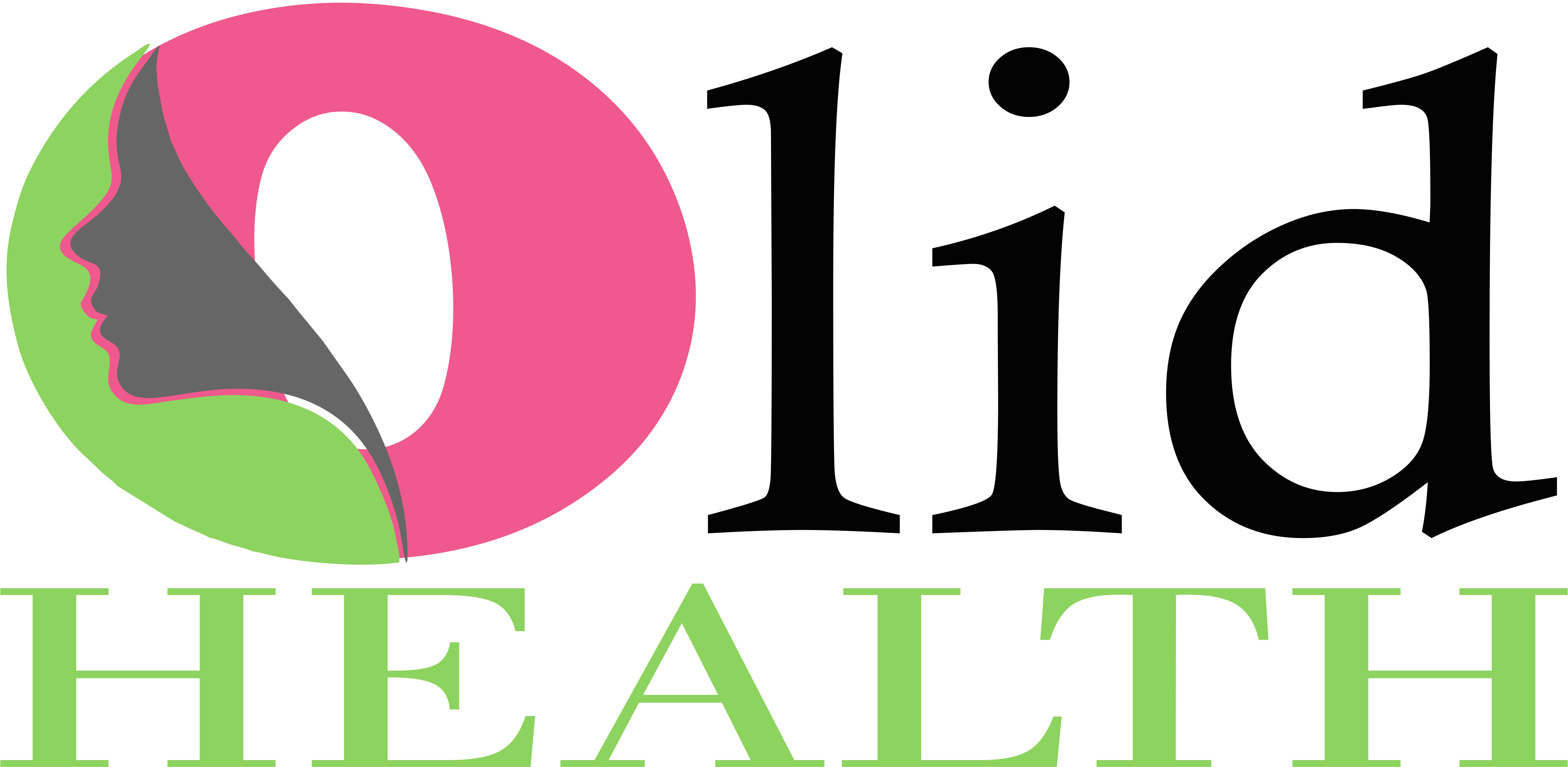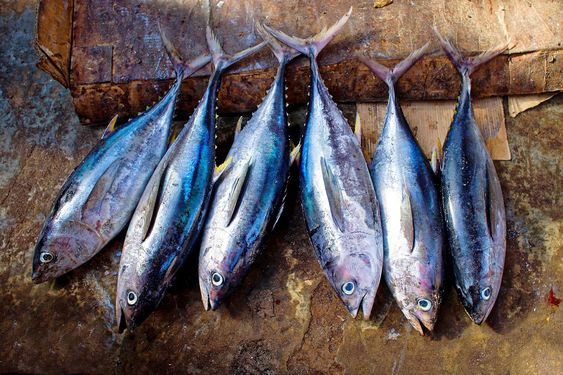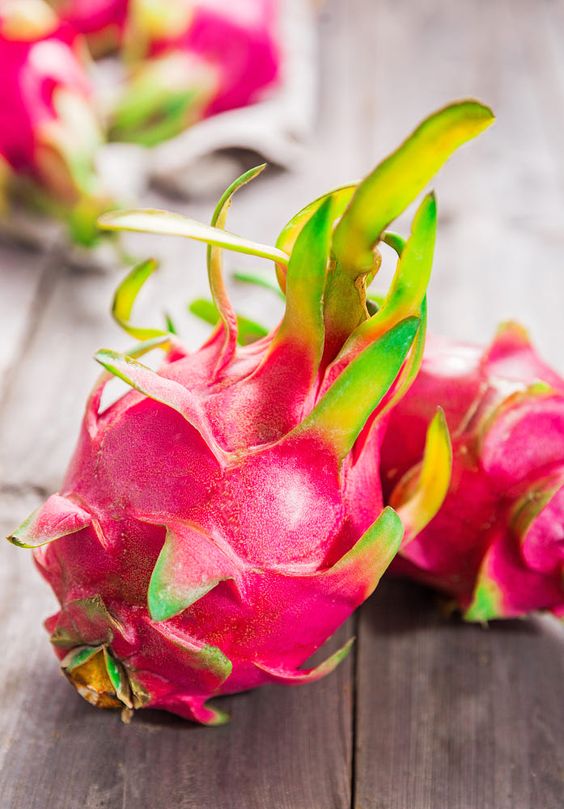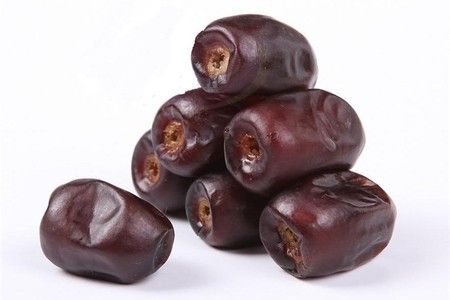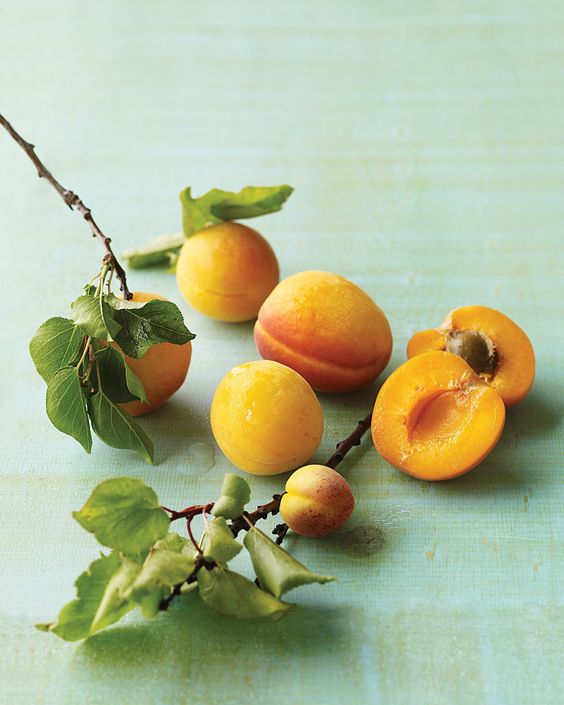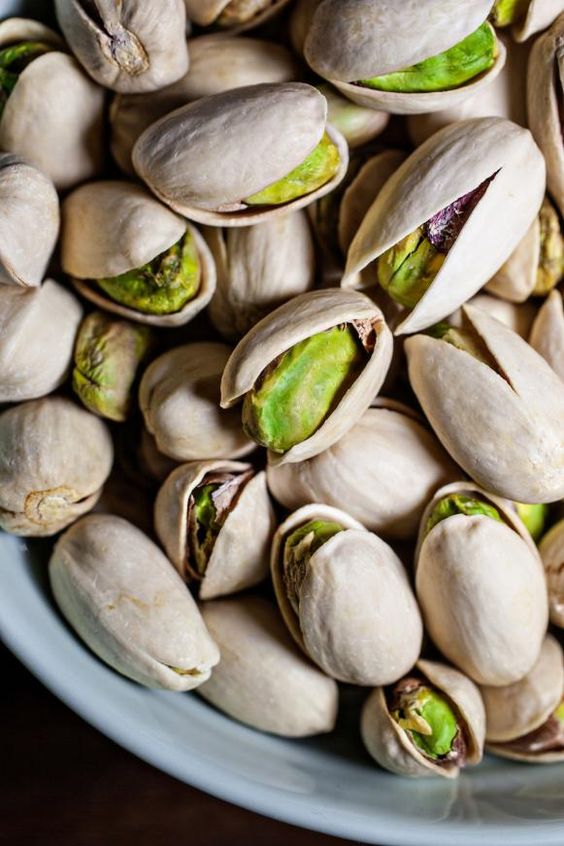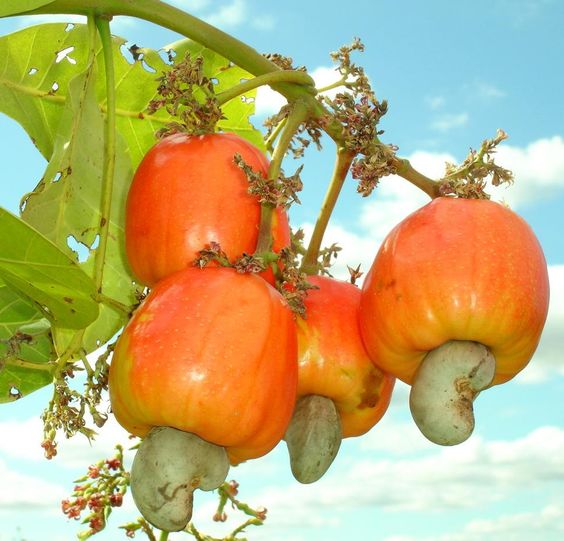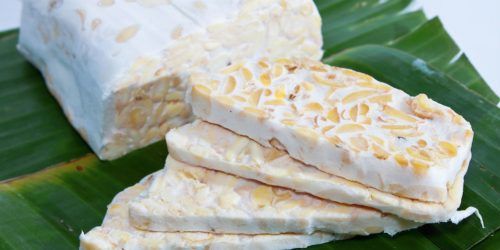Olidhealth.com – If you feel dizziness, fatigue, or weakness over time, you might have anemia. Decreased red blood cells count is the main cause of anemia. The symptom of anemia can be worse and disturb your activity if you did not care about it. Before it’s too late, you can reduce or prevent it by consuming foods and supplements that can increase your red blood cell count.
There is the best food to increase your red blood cell count such as beetroot, dates, and so on. However, how do these foods affect hemoglobin level, red blood cell count, or the anemia itself? The nutrition in these foods may induce or partly contribute to certain organs producing more red blood cells.
Before introducing these foods, we should know about the difference between hemoglobin level and red blood cell count because they can affect the risk of anemia.
Is Hemoglobin Level Related to Anemia?
People with anemia sometimes don’t feel anything and they could be like normal people. However, the symptoms would happen under serious cases. To know your red blood cell (RBC) count, you should take a blood test.
The test is to determine hemoglobin level though it could be slightly different than red blood cell count. Hemoglobin is the protein in the center of red blood cells that serves as an oxygen carrier. On the other side, the cell count should be counted by its number from the red blood cells in your hematocrit (blood liquid) [1].
A hemoglobin test can reveal certain information about red blood cells. Low hemoglobin indicates a low RBC count. Even thought you have normal hemoglobin, you are still prone to have a deficiency of red blood cells. So in that case, you should take a complete blood count (CBC) to examine your blood completely.
A complete blood test can measure your red blood cell count, white blood cell, hematocrit, hemoglobin, and platelet to detect the disorder in your body.
Causes of Anemia
Anemia can be caused by internal problems including chronic disease or low intake of certain nutrition [1]. There are also common causes of anemia such as:
- Gastrointestinal complication
- Malnutrition on infant and child
- Take certain medications
- Lack of vitamin B12
- Iron deficiency
- Bone marrow disease
- Kidney disease
- Internal bleeding caused by gastroesophageal reflux disease (Gerd)
- Blood loss
Best Food For Increase Red Blood Cell Count
Practically, we already know these foods since it is fundamental in our dietary routine. Even though, sometimes we are unaware that various foods affect the number of red blood cells in our body. We barely pay attention to detailed information about nutrients that we consume and their benefit for our health. Meat, fruits, vegetables, legumes, and certain processed food could become healthy food to increase your red blood cell count and hemoglobin level. We compile these foods to point up their health benefit and help you to pick up a suitable diet to match up your taste.
Important Note: Foods with micromineral like iron, copper, and zinc is the best choice to increase red blood cell count. Vitamin C is also important to carry minerals into the body in order to smoothen mineral absorption.
Meat
The first food with the benefit to increase red blood cell count is obviously meat. Why meat is listed as the number one? because meat has abundant minerals such as iron, calcium, magnesium, potassium, and phosphorus. Based on fact, iron has a role in hemoglobin within red blood cells to distribute oxygen across the body. So iron is essential in red blood cell production. Iron in meat can be called heme iron since it is a pre-produced iron component before it is converted to hemoglobin [2].
The amount depends on its part and the animal itself. For example in cows, organ meat such as liver and kidney have a high proportion of iron than other parts such as sirloin or tenderloin. The liver also has copper that can improve red blood cell production. The same goes for variant livestock. Poultry has much less iron content than lamb or cow.
Choosing meat as iron source food should be considered since its health benefit depend on how to process it. Cooking meat with the roasted and grilled technique is not recommended because it can form carcinogenic compounds that are bad for your health. We suggest cooking meat with steamed or boiled technique to reduce the use of oil.
Eggs
Commonly, we take breakfast with fried egg and bacon in the American style, or with rice in Asia culture. Hen, turkey, duck, quail, goose, and other poultry can produce eggs in variant sizes and colors. However, the nutrition of eggs, especially in iron content is contrasting for each of these eggs. Some studies found that turkey eggs have 4 times more iron content than common eggs followed by duck eggs, quail eggs, and goose eggs.
Iron has several functions in our body, one of them is to make red blood cells [3]. Vitamin B12 and folate are also important to aid the process of hemoglobin production in the bone marrow. Eggs have a good amount of folate and vitamin B12 to integrate whole red blood cell production.
Furthermore, eggs also have vitamin A and vitamin E to improve red blood cell production and protect it against free radicals. Copper, magnesium, and certain amino acids are also present in eggs that may help in hemoglobin production.
The way you cook eggs also affect its nutrient. According to the expert, fried eggs strangely have more iron properties than boiled ones. Even so, fried eggs use oil that may affect people with high cholesterol. We suggest cutting down the amount of oil in fried processed food to make it more healthy.
Seafood
Mediterranean folk used to eat seafood as same as a staple food. Besides its tasty flavor, seafood also has many benefits for our health. Not to mention, certain minerals in this seafood such as iron and copper may have a beneficial effect to help rise up red blood cell count.
As further information, Seafood has an iron precursor to building hemoglobin called heme iron where it can also be found on meat and poultry. The body can absorb iron easily if in the form of heme iron and transform it into hemoglobin. The following are seafood that is suitable for people with anemia conditions.
Squid
We know that this seafood has distinctive features like having eight legs as tentacles and can sprout out black ink if in a dangerous situation. However, the black ink of squid, or in Italian name is calamari, is surprisingly rich in minerals like iron and copper. Based on some research, squid ink can increase hemoglobin and normalize iron levels in the blood in patients with iron deficiency. The high copper content in squid also contributes to cooperation with iron in red blood cell formation. Squid can be your alternate choice besides red meat to improve hemoglobin production and increase your red blood cell count.
Fish
Fish are known as a good source of minerals include iron, copper, potassium, phosphorus, zinc, magnesium, and sodium. It also has a small amount of manganese, calcium, and selenium. Food with high iron can raise hemoglobin levels and decrease the risk of anemia. According to the expert, a moderate amount of zinc in certain fish can affect red blood cell count because it can stimulate the production of red blood cells.
Furthermore, fish also have a trace amount of folate and vitamin B12 which may slightly improve hemoglobin in your body. You can combine fish with citrus food like lemon since vitamin C in lemon can carry out heme iron to make it easy to be absorbed into your body.
Shellfish
To fight off anemia, Shellfish such as oysters, clams, scallops, and mussels are the best foods to reduce that besides meat and poultry. So far, shellfish have the highest content of iron, coppers, and zinc than other seafood which can help the body to produce more red blood cells.
European folk sometimes serve shellfish as raw and fresh. However, we recommend consuming cooked shellfish for some reason. Based to the expert, shellfish especially cooked mussels surprisingly have more iron content than fresh mussels. Cooked mussels also increase other nutrients such as vitamin C, vitamin B12, folate, and some minerals. Cooked shellfish can be an alternate iron resource for you to fight anemia.
Fruits To Increase Hemoglobin Level
Meat and legumes are the top iron-rich food so far. Even so, fruit also can increase red blood cell count in a different way. Vitamin in these fruits can help the body to boost the production of hemoglobin and reduce the risk of anemia. We select the best fruit for you which may help to reduce your anemia symptom.
Avocado
This green fruit may have the benefit to increase your red blood cell count although in an indirect way. Some studies suggest that avocados have minerals like iron, zinc, and copper. Despite the fact that having these minerals in small proportion, it may have the benefit to increase hemoglobin production.
The strong point of avocado is to aid red blood cell production with vitamin C as an iron carrier. Other vitamins like vitamin A and E also exist in avocados to help red blood cell formation and protect the cell from free radical scavengers. For additional information, Avocado in oil form has higher iron content than fresh avocado.
Berries
Berries are abundant fruit with many variants of it and spread across the world. There are also unique berries that have benefits for health since it has antioxidant properties to reduce the risk of various diseases. For most of the berries to raise red blood cell count, strawberries have the highest properties of iron and vitamin C followed by blueberries and blackberries. Add this fruit to your meal which may reduce your anemia symptom.
Pomegranate
Pomegranate can be optional fruit as a red blood cell enhancer. This citrus fruit is not increasing red blood cell count directly but can help to speed up iron absorption. Pomegranate has high vitamin C properties that can serve as an iron carrier and help to absorb iron easier. Moreover, this fruit also has trace amounts of iron, zinc, and folate which may help to increase red blood cell count. Besides that, Vitamin C also contributes as an antioxidant agent to remove free radicals that can damage your blood cell.
If you choose this fruit to fight off anemia, we suggest eating the fresh pomegranate than the processed ones. Some research found that pomegranate juice has less nutrition than fresh pomegranate. So, consuming fresh pomegranate would be good for your health.
Dragon Fruit
This fruit is one of the superfoods and the health benefit of dragon fruit is also well known across the world. Many doctors recommend this fruit as additional dietary since it has rich in nutrients and minerals such as vitamin C and magnesium. Some people believe that dragon fruit can increase red blood cell count and reduce anemia symptoms. In some research, iron properties in dragon fruit are relatively higher than other fruit. Because of that, dragon fruit can be used to treat people with anemia.
Dried Fruit to Boost Red Blood Cell Production
if we compare the fresh fruit and the dried fruit, the difference is just in its water content. However, the nutrition in some fruit is escalating if being dried first. There are dried fruits that have the benefit to increase red blood cell count.
Dates
Dates are considered as a superfood since they have multipurpose functions for health. As for increasing red blood cells count, dates have rich in iron and trace amounts of copper that important components in red blood cell production. Dates also have vitamin C and vitamin A which can be carriers of iron and improve iron absorption.
Moreover, Dates also have other health benefits such as improving coronary and hepatic function, maintaining blood sugar levels, and can serve as an antioxidant agent. Consuming this magnificent fruit into your diet routine might alleviate your anemia symptom.
Apricots
These yellow sphere-like fruits are belonging to the prunus family include plums and cherries. Apricot is a good source of iron and vitamin A. Some studies found that dried apricots have more iron content than fresh apricot. Adequate iron in your body can reduce the risk of anemia. People suggest apricot juice may help reduce anemia symptoms because apricot contains vitamin A to help absorption iron supplements.
Besides its benefit to increase red blood cells count, apricots also have antioxidant compounds such as quercetin, catechin, and chlorogenic acid. These compounds can neutralize free radicals and protect the cell from them. Based on some research, antioxidants may improve red blood cells production indirectly. However, it still little information about this matter.
Peaches
Peaches are the stone fruit of the prunus tree. It is high in nutrients and minerals such as calcium, iron, phosphorus, and potassium. Iron is necessary for red blood cell production same goes for potassium. Iron deficiency can lead to anemia, while potassium deficiency in the blood can lead to hypokalemia. Peaches are also have rich in vitamin C and vitamin A which can help iron absorption.
Studies found that peaches also have a small amount of folate which contributes to making red blood cells. People suggest that dried peaches may have more benefit to rise up hemoglobin levels. Frankly, peaches alone don’t make you free from anemia. Eating this fruit with other iron-rich food can help you to reduce the risk of anemia.
Nuts and Legumes to increase red blood cell count
We can’t deny that nuts and legumes have many benefits and purposes for maintaining our health. They have plenty of nutrients and minerals to keep our body functioning stay healthy. As for managing hemoglobin levels, nuts and legumes may have solutions to keep that level and reduce the possibility of anemia. The following foods may have benefits to fight anemia.
Pistachios
If you don’t know about pistachios, it is a big mistake. The origin of pistachios came from Iran and Middle East Asia. However, it has been cultivated across the world. Pistachios have myriad benefits include treating people who have iron deficiency.
Studies found that iron content in pistachios is the highest than other nut variants. Iron is an essential component of heme which is converted to hemoglobin. Other minerals such as copper, magnesium, and zinc in pistachios also contribute to red blood cell formation.
Cashews
This unique shape fruit has known that have many benefits for health. The flesh part of cashews apple can be fermented to make vinegar and alcoholic beverages, while the bottom part is dried and serve as a nut. Some experts suggest that the nut part of the cashew have rich in amino acids, polyunsaturated fatty acids, and vitamins.
Cashews are also a good source of iron that important to making red blood cells. Apart from its iron content, cashews also contain several minerals like magnesium, phosphorus, and potassium. Iron in cashews is non-heme iron which means it’s hard to be absorbed into your body. Even so, Cashews still be good for patients with low red blood cell count. However, don’t eat too much of this nut since it has high oxalate content that can lead to kidney problems. Consuming these nuts in small numbers is safe to promote your health.
Soybean and Soy Product
For some reason, soybean may increase red blood cell count because of its high in nutrients. Soybean has essential minerals such as potassium (highest), phosphorus, calcium, magnesium, and sodium. It also has micromineral including iron, zinc, manganese, copper, and selenium. In red blood cell production, iron and copper are essential to forming hemoglobin and shaping red blood cells.
Soybean is also known to have high amino acid content. Like meat and poultry, 9 essential amino also exist in soybean including valine, isoleucine, lysine, phenylalanine, tryptophan, threonine, methionine, leucine, and histidine. It also has conditional essential amino acids such as arginine, tyrosine, cysteine, glycine, serine, proline, and glutamic acid. Some research suggests that various amino acids such as valine, isoleucine, arginine, and Alanine can slightly improve red blood cell production.
Soy products like tempeh have relatively the same nutrition as soybean. Tempeh may be good for rising up hemoglobin levels. However, other soy products like tofu should be avoided since they have a high content of calcium. According to the expert, calcium can overtake iron absorption. So, minimizing tofu intake may help you to maintain hemoglobin levels.
Vegetables To Increase Red Blood Cell Count
Maintaining red blood cell count and hemoglobin can be done if you eat vegetables with high iron and folate content. Veggies also have the benefit of lowering the risk of anemia.
In additional information, Iron in vegetables along with other plant-based food such as fruits, legumes, and nuts are called non-heme iron. This type of iron has less to be absorbed into the body. Even though it can’t be absorbed well, it can be an alternate choice for people who don’t want to eat meat. The following veggies can help you to deal with anemia.
Beetroot
People believe that the red compound in these veggies can increase red blood cell count since having reddish color. It’s not completely wrong to say that pigment in beetroot skin and flesh can affect hemoglobin levels. Anthocyanin may have benefits besides its main function as an antioxidant, it can help protect red blood cells from malicious substances.
The major component in beetroot which helps produce red blood cells is its nutrient and mineral contents. Folate and iron have an important role to increase hemoglobin production. Beetroot can be served as juice and is surprisingly good for alleviating anemia conditions.
Spinach
Spinach is typical food found in every home in this world. This green leafy vegetable has the benefit to your stomach because high in fiber and nutrition. Moreover, some people may already know that spinach can treat people with anemia. The reason because spinach has minerals such as iron and magnesium fairly higher than other vegetables.
Iron-rich food has been known for its need in making red blood cells. However, as reported by experts, magnesium-rich food can also boost hemoglobin production and lower the risk of anemia.
Furthermore, spinach also has a small amount of vitamin C, Vitamin A, and folate which help iron be absorbed easily and protect the cell against free radicals. You can consume this vegetable regularly and it may alleviate your anemia symptom.
Broccoli
This green vegetable might not be much liked by children since have a unique flavor and tend to have a bad breath if being eaten. There are also have many kinds of broccoli such as Chinese broccoli and broccoli rabe (not considered as broccoli and more closely related to turnip).
Broccoli may be the best food to fight anemia. Broccoli has high in folate which benefits to increase hemoglobin levels. Folate is an essential component in red blood cell production within the bone marrow. Folate can produce heme, an important component in hemoglobin.
Moreover, broccoli also has high minerals such as iron, magnesium, zinc, and a small amount of copper that help red blood cell formation. On the other hand, broccoli has high in calcium that may affect iron absorption. Keeping proportion intake of broccoli and if possible adding olive oil mix with it may elevate its benefit for your health.
Food That You Should Be Avoided
Taking food high in iron may relieve your anemia symptom. Even so, there are several foods that may interrupt the production of red blood cells. Calcium-rich food can be bad if you have chronic anemia. You should refrain from consuming these foods. We summarize several foods that might be bad for your anemia.
Milk
Milk is a dietary product that has a myriad of benefits to our health, especially in bone and teeth formation. However, milk intake combined with rich-iron food is the worst choice. Calcium in milk can interrupt iron absorption in the gut. Calcium is more likely to be absorbed first than iron which results in iron deficiency. Keep away from mixing milk and other food that has less benefit to your body.
Cheese
The same goes for dairy products like cheese. Though it has iron content, the amount of calcium in cheese is multiple manyfold than other dairy products. So that iron can’t be absorbed properly. If you have an anemia condition, we suggest lowering the consumption of calcium food like cheese to rise up your hemoglobin level.
Soymilk
People with lactose intolerant usually choose soymilk as a substitute for milk. Although soymilk is made from soybean that has health benefits to rise up hemoglobin levels, It doesn’t mean soymilk has the same properties as soybean. Soymilk is actually a dairy product that has rich in calcium and low iron. Avoid this food if you have chronic anemia because calcium can cut off iron absorption and susceptible to have iron deficiency.
Tea
Black tea or green tea can relax your thought and moods booster. However, taking too much of it can bring out health problems. If you have anemia, avoid drinking this tea. Based on some research, tea has compounds called tannates that can interfere with iron absorption and lead to iron deficiency.
Conclusion
Low red blood cells count can be bothersome in your body and can lead to anemia. Increasing red blood cell count can be done in several ways. To solve this problem, the best way is to consume healthy foods. However, not every healthy food can alleviate anemia symptoms. Food with high content of iron and vitamin C can increase red blood cell count. Other nutrient-rich food also can affect hemoglobin production like copper, zinc, folate, and amino acids. You might need these foods to reduce the risk of anemia or maintain your body stay healthy.
Reference
[1] https://www.ncbi.nlm.nih.gov/books/NBK499994/ – Anemia, and causes
[2] https://www.ncbi.nlm.nih.gov/pmc/articles/PMC3967179/ – iron-heme in meat is a good source for hemoglobin production
[3] https://www.ncbi.nlm.nih.gov/pmc/articles/PMC4488814/ – white yolk egg is important to increase iron level in rats model
